In the ever-evolving landscape of software as a service (SaaS), it’s not just about attracting customers; it’s about retaining and monetizing them efficiently.
One of the most critical financial metrics SaaS companies monitor is the exchange rate. Your SaaS exchange rate, in which you convert free or trial users into paying customers, can make the difference between a thriving business and one that struggles to keep its head above water.
As a SaaS provider, understanding your exchange rate and methods to enhance it is paramount. This comprehensive guide will walk you through the why and how of SaaS exchange rates and industry benchmarks and provide you with an arsenal of 21 tactics to boost your currency conversion.
The Importance of SaaS Exchange Rates
Often overlooked, your SaaS exchange rate directly reflects your marketing and sales effectiveness. It gauges how compelling your product is to users and how seamless your sales process is. It tells a story of your customer service quality and product adaptability.
Ultimately, a strong exchange rate indicates that your business is aligned to meet customer needs and provide value that resonates. So, enhancing your exchange rate is not just about generating more revenue; it’s also about creating a better business model.
Understanding SaaS Exchange Rates
Before delving into strategies for improvement, we need to understand what SaaS exchange rates are and how they influence your business. SaaS exchange rates refer to the percentage of free or trial users that convert to paid subscriptions.

A high exchange rate indicates your ability to convince potential customers about the value of your product and your company’s understanding of their needs.
Definition and Calculation
To calculate your SaaS exchange rate, divide the number of customers who converted to a paid subscription by the total number of free or trial users during a specific period:
\[ \text{Exchange Rate} = \left( \frac{\text{Paying Customers}}{\text{Total Free or Trial Users}} \right) \times 100 \]
Significance for SaaS Companies
The exchange rate is vital as it provides a comparative value for the effectiveness of different marketing channels, sales efforts, and product iterations. It’s a direct measure of your product-market fit and customer satisfaction. A low exchange rate indicates a need for improvement in those areas.
What is the conversion rate in SaaS?
In the realm of SaaS, the term “conversion rate” refers to the ratio of visitors who take a desired action to the total number of visitors. The desired action can differ based on the company’s goals, but it often refers to converting a visitor or free trial user into a paying customer.
For example, consider a SaaS company that offers cloud storage solutions. They might track their conversion rate as the percentage of website visitors who sign up for a trial period or free version of their service. If they have 1,000 visitors in a given month and 50 sign up for the trial, their conversion rate would be 5%.
Here’s how you calculate the conversion rate:
- Determine the number of users who completed the desired action (for instance, those who signed up for a free trial).
- Divide that number by the total number of site visitors.
- Multiply by 100 to convert the fraction to a percentage.
Thus, the formula for calculating the conversion rate is:
\[ \text{Conversion Rate} = \left( \frac{\text{Users Taking Desired Action}}{\text{Total Site Visitors}} \right) \times 100 \]
In the SaaS world, improving your conversion rate can have a significant impact on your bottom line. Even a slight increase can lead to a substantial increase in revenue, especially for companies with a large user base. Therefore, tracking and optimizing your conversion rate should be a priority for every SaaS business.
What is a reasonable pipeline conversion rate in SaaS companies? Industry benchmarks
Knowing your industry benchmarks is vital for understanding whether your SaaS company’s pipeline conversion rates are performing at par, below, or above the industry standard. However, it’s important to note that conversion rates can vary significantly depending on various factors, such as the type of product, target audience, and pricing strategy.
According to a report by OpenView, here are some industry benchmarks for SaaS companies:
- Trial to Paid Conversion: For freemium or free trial models, a reasonable conversion rate can range between 5% to 25%. Your company should strive for a minimum of 5%, but higher rates often reflect more compelling products or exceptionally adept sales teams.
- Visitor to Trial Conversion: The conversion rate of website visitors to trial users generally falls between 2% and 7%. A rate closer to 7% or above is considered excellent in the industry.
- Lead to Customer Conversion: Typically, this conversion rate falls within the 0.5% to 10% band. If your company is achieving a conversion rate of 10% or more, it’s doing an excellent job of converting leads into paying customers.
To improve these metrics, it’s crucial to consistently evaluate and optimize your sales and marketing strategies. For example:
- Enhance User Experience: Ensure your website and product interfaces are intuitive and user-friendly.
- Nurture Leads: Engage with your leads regularly through email marketing, webinars, or helpful content.
- Improve your Product: Continually refining your product based on user feedback can improve its value proposition.
Remember, while these benchmarks serve as a guide, the most important goal is to continuously improve your own conversion rates. A comprehensive understanding of your target audience, combined with a well-executed sales and marketing strategy, can help your SaaS company achieve and surpass these industry benchmarks.
What is a good free trial conversion rate in SaaS?
In the SaaS industry, a good free trial conversion rate can vary significantly depending upon a multitude of factors such as target market, product nature, pricing, and overall user experience. However, as a general benchmark, a conversion rate of around 15-20% is considered to be good.
- Above Average: 25% and More: If your SaaS company is achieving a free trial conversion rate of 25% or more, it is performing exceptionally well. This rate implies that a quarter of your free trial users see enough value in your product to become paying customers. For instance, if your company offers a unique and innovative solution for which there is strong market demand and your product’s user experience is excellent, you might see conversion rates in this range.
- Average: 15 – 20%: For most SaaS businesses, a 15% to 20% free trial conversion rate is typical and can be considered good. It means that for every 100 free trial users, 15 to 20 are likely to convert to paid subscriptions. For example, a SaaS company providing CRM solutions might fall in this range if their product offers a good balance between cost and value and their customer service is responsive and effective.
- Below Average: Less Than 15%: If your conversion rate falls below 15%, it’s an indication that there might be areas for improvement. You may need to revisit your product offering, pricing, or customer engagement strategies. For example, if a SaaS company offering project management software has a poor user interface or complex features, it might experience lower conversion rates.
In order to improve your free trial conversion rate, consider the following strategies:
- Improve Onboarding: Make the onboarding process as seamless and intuitive as possible. A user-friendly onboarding guide can help new users understand your product’s value proposition quickly.
- Provide Excellent Customer Support: Responsive, proactive, and empathetic customer support can increase the likelihood of free trial users converting to paid customers.
- Communicate Value Clearly: Ensure your marketing messaging effectively communicates the unique benefits and value of your product.
Remember, these are general benchmarks and improvement strategies. Each SaaS business is unique, and what works best for your company may vary based on your specific product, target audience, and market conditions. Regular testing, analysis, and optimization are key to improving your free trial conversion rate and overall business performance.
How do I increase my SaaS conversion rate?
Increasing your SaaS conversion rate requires a focused, data-driven strategy. Here are some actionable strategies, along with illustrative examples, to guide you:
- Improve User Experience (UX): The overall UX of your product plays a pivotal role in conversion. A seamless, intuitive interface can significantly improve user engagement and conversion rates. For example, Dropbox, a popular cloud storage service, places a high emphasis on UX. They continually refine their interface to make it as user-friendly as possible, which has significantly contributed to their high conversion rates.
- Effective Lead Nurturing: Regular engagement with prospective customers via personalized emails, webinars, and high-value content can nurture them toward conversion. Intercom, a messaging platform, does this effectively with targeted email campaigns that address specific user needs and concerns.
- Offer Free Trials or Demos: Free trials allow potential customers to experience your product firsthand, increasing the likelihood of conversion. Slack, a team collaboration tool, offers a free trial, making it easy for new users to understand and appreciate the value they provide.
- Provide Exceptional Customer Support: Responsive and empathetic customer support can boost customer satisfaction and improve conversion rates. Zendesk, a customer service software company, is known for its stellar customer support, which has been a significant factor in its high conversion rates.
- Clearly Communicate Value Proposition: Your marketing messaging should effectively highlight the unique benefits and value of your product. Salesforce, a CRM software provider, excels in this aspect. Their clear, concise messaging effectively communicates their product’s value, resulting in high conversion rates.
- Streamline the Checkout Process: A complicated checkout process can lead to cart abandonment. Simplifying this process can significantly improve conversion rates. FreshBooks, a cloud-based accounting software, has a straightforward, user-friendly checkout process that contributes to its high conversion rates.
Industry Average Exchange Rates
Current industry benchmarks
To offer a benchmark, the average SaaS exchange rate tends to fall between 2% and 5%. Factors such as industry segments, competitive landscape, and economic conditions influence these averages. As a SaaS company, you should be striving to improve your exchange rate continuously and not just settle for the industry standard.
Factors Affecting Exchange Rates
Several factors can affect your SaaS exchange rate, including:
- Product Fit: Does your product solve a pressing problem for your users?
- Competitive Landscape: How do you compare to others in your space?
- Market Sentiment: Are current market trends impacting demand for your product?
Understanding how these factors play out in your specific market will help you develop a targeted approach to raise your exchange rate.
Tactics for Improving Exchange Rates
Enhancing Product Value
The cornerstone of a high exchange rate is a product that consistently delivers value. Conduct thorough market research, gather user feedback, and make product updates that directly address your customers’ pain points. Focus on features that help them achieve their goals more effectively or efficiently.
Optimizing Pricing Strategies
Your pricing should reflect the value your product offers. Implement tiered pricing, value-based pricing, and annual plans with discounts to appeal to different customer segments. Avoid pricing that’s too complicated but still allows for growth and profitability.
Improving Customer Onboarding
First impressions matter. Create onboarding processes that are intuitive, educational, and engaging. Show your new users quick wins and make the transition to your full product as smooth as possible.
Increasing Customer Engagement
Regular interaction keeps your product at the forefront of your customer’s mind. Use email campaigns, notifications, and in-app messages to drive engagement and offer content, such as webinars, to educate your users.
Streamlining User Interface
A user-friendly interface can significantly impact your exchange rate. Simplify navigation, reduce clutter, and ensure a consistent design across all touchpoints to provide a pleasant user experience.
Offering Flexible Payment Options
Different users have different preferences when it comes to purchase. Offer a range of payment options, from credit cards to PayPal or even cryptocurrency, to make it as easy as possible for them to commit.
Providing Excellent Customer Support
Accessible, efficient, and friendly customer support can win over customers who are on the fence. Offer various channels for support, including live chat, email, and phone, and invest in training your support team to be product experts.
Leveraging Data Analytics
Use detailed analytics to identify where users drop off in the sales process or churn. Use this information to make data-driven changes and test hypotheses to see what positively impacts your exchange rate.
Personalizing User Experiences
Personalization can make your product offering feel tailor-made for the user. Use customer data to offer personalized recommendations and ensure that your communications address them by name and consider their history with your product.
Reducing Churn Rate
A high churn rate can lower your exchange rate over time. Focus on customer successes and continually improve your product to address any reasons customers might have for leaving.
Upselling and Cross-Selling
Once you have a customer, work on continuously proving value through your offerings. Upsell them to premium features or cross-sell related products to increase their lifetime value.
Implementing Referral Programs
Happy customers can be your best salespeople. Provide incentives for customers to refer others to your product, and make it easy for them to do so with shareable content like referral links or social media posts.
Investing in Marketing and Advertising
Visibility is key. Invest in marketing to attract customers who have a high probability of converting. It includes targeted ad campaigns, search engine optimization, and content marketing efforts.
Building Trust and Credibility
Trust can grease the wheels of your exchange rate. Implement security measures, feature customer testimonials and case studies, and be transparent about your product’s capabilities and limitations.
Expanding Target Market
If your current market is limited, consider expanding your offerings to new verticals or niches. It can open you up to new opportunities and customers who may have a higher conversion potential.
Collaborating with Strategic Partners
Partnerships can help you gain access to new audiences and validate your product in the market. Choose partners who align with your brand and can help increase your credibility and customer base.
Monitoring Competition
Keep an eye on your competitors and how they position their products. It can help you identify market trends, possible areas of improvement, and new strategies to win over customers.
Continuous Product Improvement
A product that stagnates will lose its appeal. Continue to innovate and improve to stay ahead of the competition and continually attract and provide value to customers.
Offering Trial
Allowing users to try your product before committing can build confidence and lower the barriers to entry. Ensure the trial effectively showcases the value of the product and guides it towards conversion.
Listening to Customers
Finally, always listen to your customers. They are the best source of feedback and can provide valuable insights on how you can improve your product and increase your exchange rate. Continuously gather feedback and use it to make data-driven decisions for your business.
Conclusion
Improving your SaaS exchange rate is not a one-time task; it’s a continuous objective that requires a multi-faceted approach. By focusing on these tactics and keeping an eye on relevant industry benchmarks, you can make your SaaS business more competitive, valuable, and resilient in the long run.
Remember, each tactic is a piece of the puzzle. The best approach is one that is tailored to your business and your specific market. So, experiment, gather data, and keep refining your strategies until you find the perfect formula for your exchange rate success.

10+ years experience in Marketing and Operations
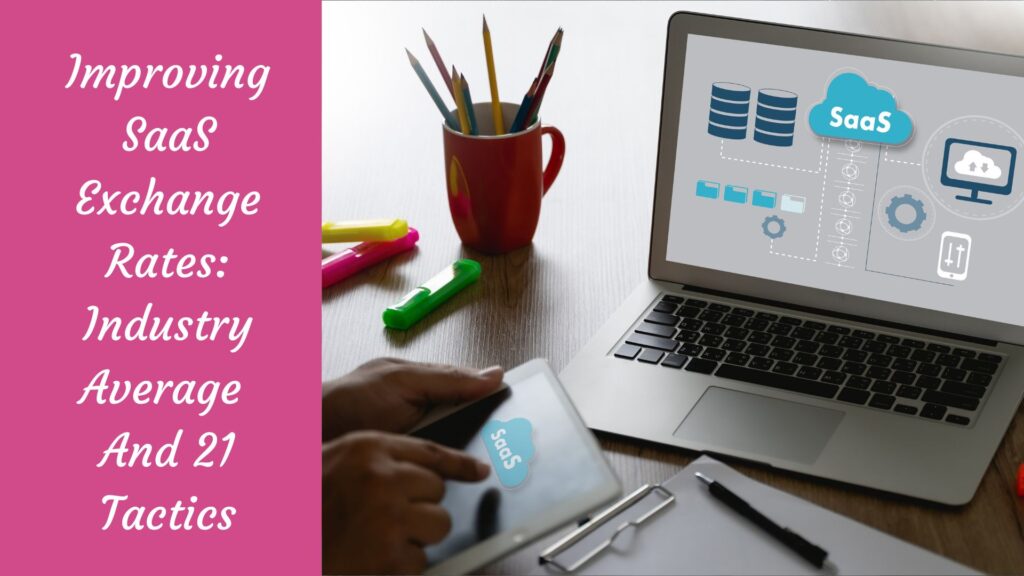
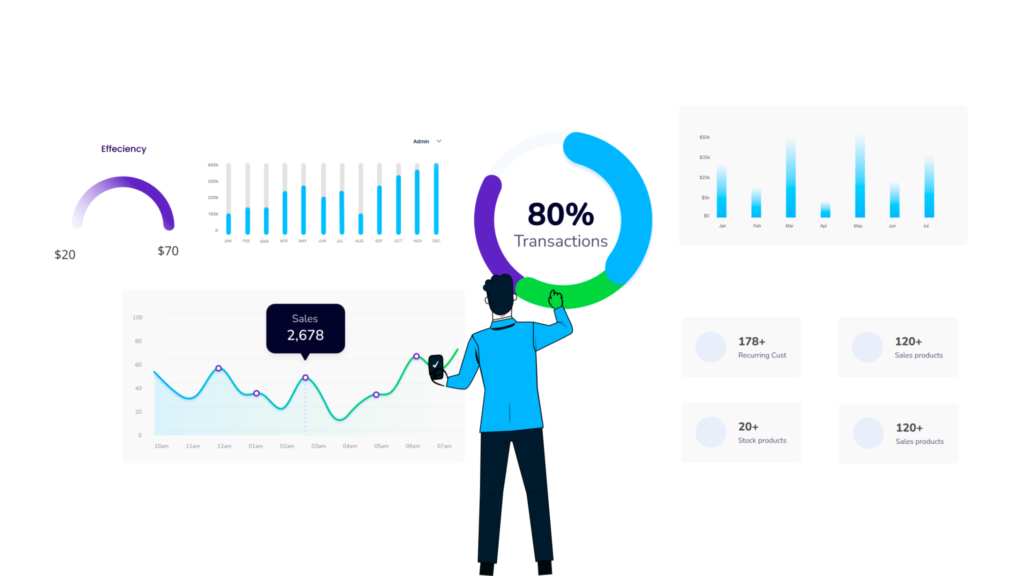
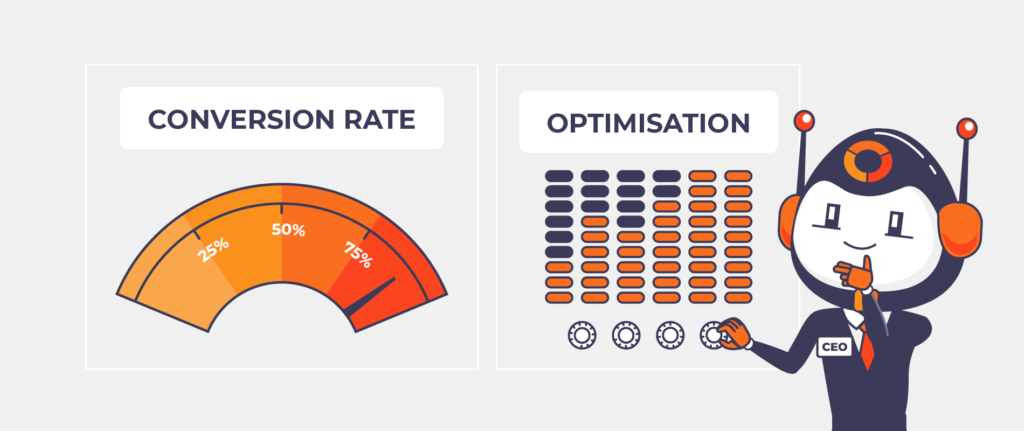
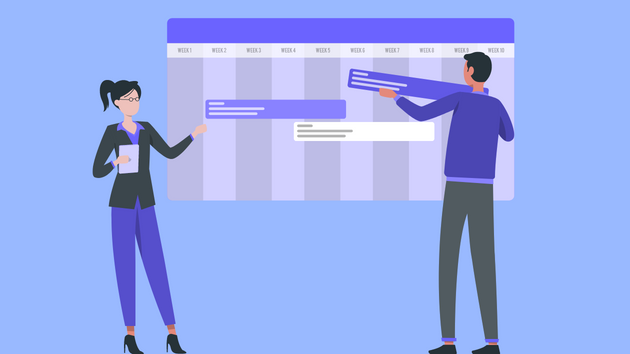
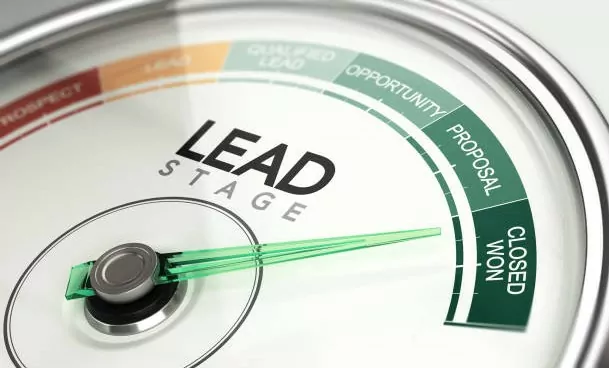
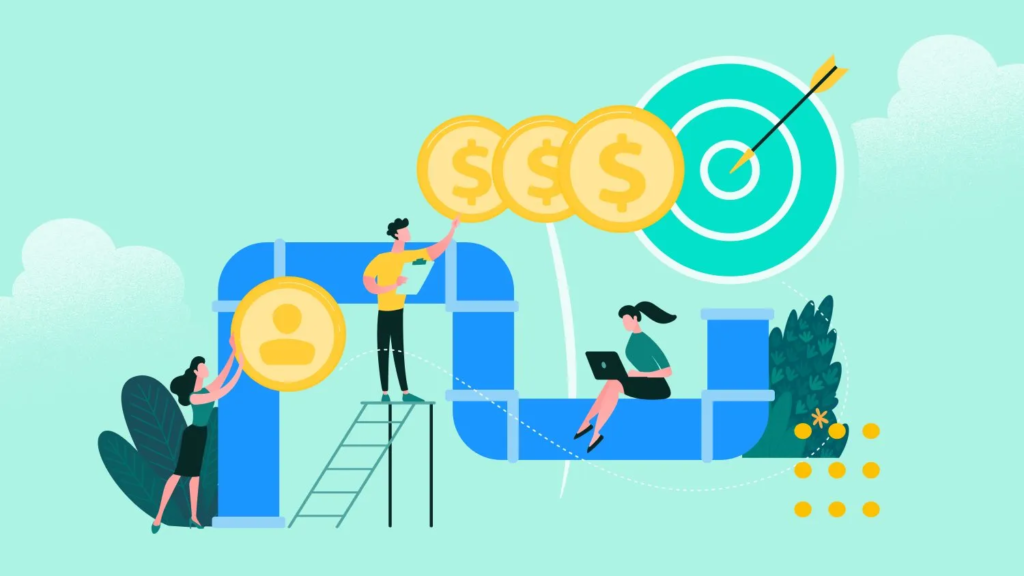
I just found this incredible website recently, they develop engaging content for customers. The site owner understands how to provide value to fans. I’m delighted and hope they continue sharing excellent insights.